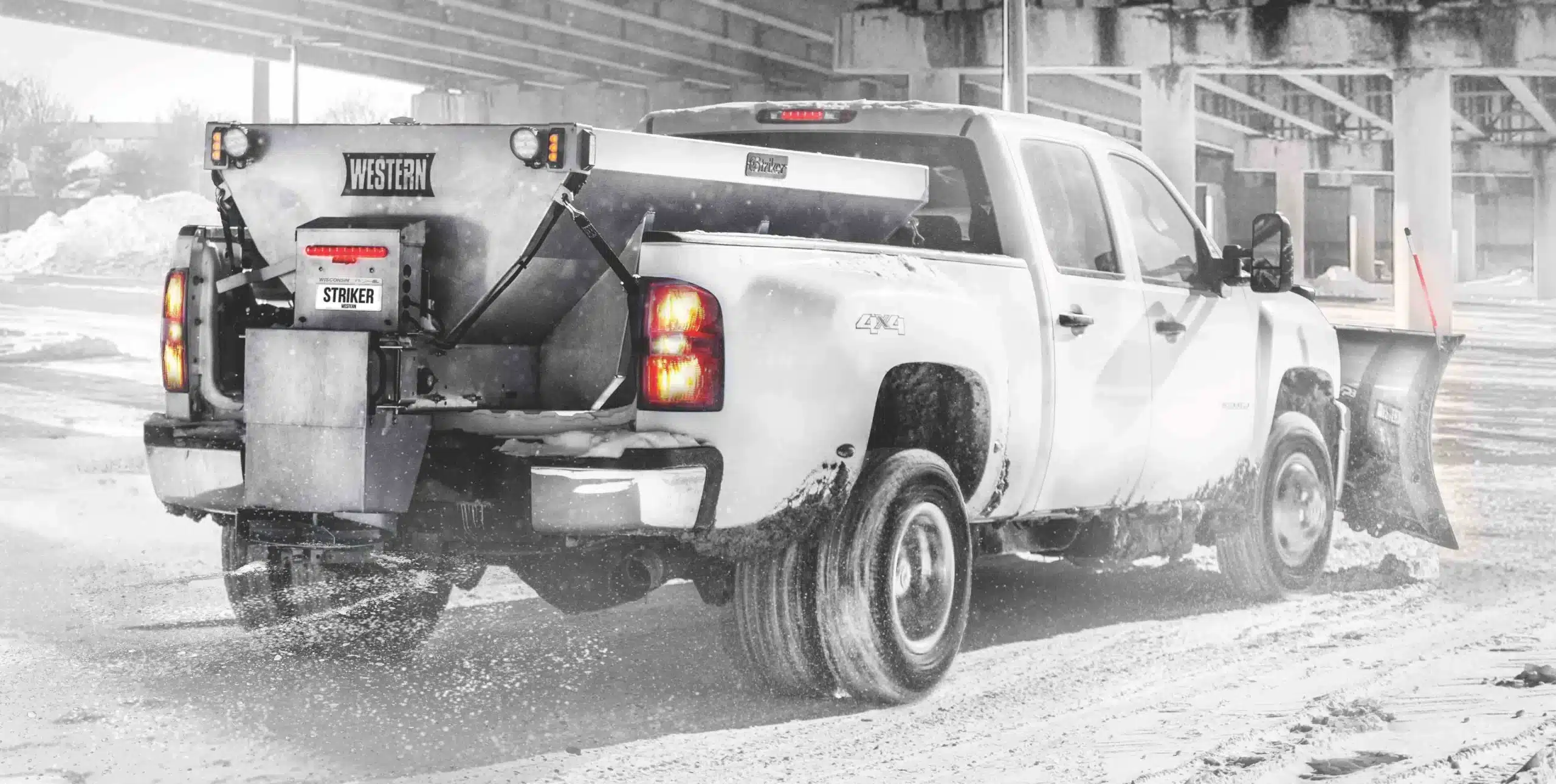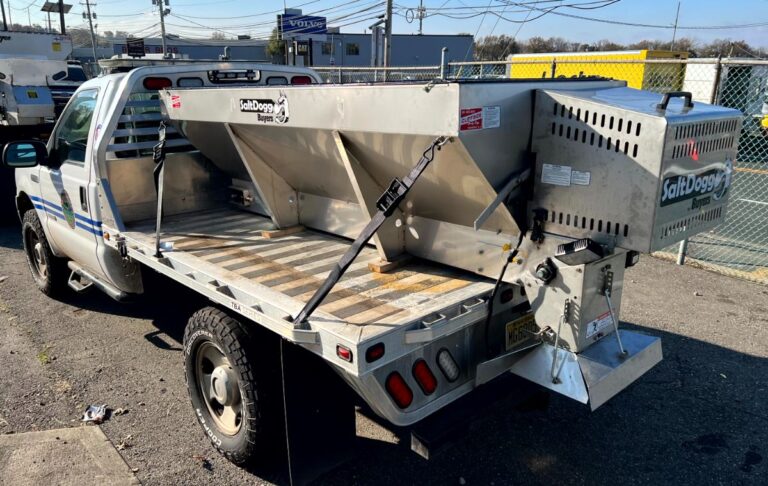
Are you in the market for a salt spreader but not sure where to start? Look no further! We’re here to help guide you through the process. In this article, we’ll walk you through seven important questions to ask when selecting a salt spreader. From capacity and size to durability and mobility, we’ll cover all the key factors to consider. So, let’s dive in and find the perfect salt spreader for your winter maintenance needs!
Key Takeaways
- The size of the area that needs to be covered and the capacity of the salt spreader are important factors to consider. Larger areas may require a spreader with a larger capacity to cover more ground efficiently.
- The type of material that will be spread, such as salt, sand, or gravel, will determine the specific features needed in the spreader. Different materials may require a larger hopper or a different type of agitator.
- The type of vehicle the spreader will be attached to, such as a truck, SUV, ATV, tractor, or skid-steer, will determine the size and weight of the spreader. The weight of the spreader affects the gross vehicle weight (GVW) of the vehicle.
- Budget considerations should be taken into account when selecting a salt spreader, as they can range in price from a few hundred dollars to $10,000+ USD. The drive option (gas, electric, hydraulic) and the cost-saving benefits of a prewet system should also be considered.
Salt Spreader Capacities
When selecting a salt spreader, determine the appropriate capacity by considering the total amount of material needed for your entire customer route. The capacity of your spreader is crucial for efficient snow and ice management. Consider the size of the area that needs to be covered. Larger areas may require a salt spreader with a larger capacity, as it can cover more ground in less time. Inadequate capacity can lead to frequent refilling, reduced productivity, and increased fuel consumption. Tailgate spreaders are suitable for smaller jobs, providing better visibility and efficient operation. V-box style spreaders are more effective for larger areas like parking lots. It is important to strike a balance between individual job requirements and overall route efficiency when selecting the appropriate spreader. By considering the total material needed and the size of the area to be covered, you can choose a salt spreader with the right capacity for your snow removal needs.
Sizes of Salt Spreaders
Consider the size of the area that needs to be covered when selecting a salt spreader. The size of the area will impact the selection of the spreader, as larger areas may require a spreader with a larger capacity. Efficiently covering the entire area is important for effective snow and ice management. A larger capacity spreader can cover more ground in less time, improving productivity. It is crucial to choose a spreader that can handle the size of the area to ensure efficient and effective operations.


The size of the area also affects the type of spreader that is suitable. For smaller areas, such as residential driveways or confined spaces, a smaller tailgate spreader may be more appropriate. These spreaders provide better visibility and efficient operation in these settings. On the other hand, for larger areas like parking lots or expansive roadways, a v-box style spreader with a larger capacity may be more effective. These spreaders are designed to handle larger jobs and can cover a greater area in a shorter amount of time.
When selecting a salt spreader, it is crucial to consider the size of the area that needs to be covered. By choosing a spreader that matches the size of the area, you can ensure efficient and effective snow and ice management operations.
Salt Spreaders: Spreading Mechanism
To ensure effective snow and ice management, you should evaluate the spreading mechanism of a salt spreader when making your selection. The spreading mechanism determines how the salt or deicing material is distributed onto the surface. There are two main types of spreading mechanisms: broadcast and drop spreaders.
Broadcast spreaders have a spinning disc or spinner that throws the material in a wide pattern. These spreaders are ideal for larger areas as they can cover a wider swath. They are also more efficient in terms of material distribution. However, they may not be as precise and can result in some material being thrown off-target.
Drop spreaders, on the other hand, have a series of evenly spaced openings through which the material is dropped onto the surface. These spreaders provide more control and precision, making them suitable for smaller areas or areas that require more accurate application. However, they may take longer to cover larger areas.
When selecting a salt spreader, consider the size of the area to be covered and the level of precision required. If you have a large area to cover and efficiency is a priority, a broadcast spreader may be the better choice. If accuracy is more important, especially for smaller areas, a drop spreader would be more suitable.
Salt Spreader Durability
Evaluate the spreader’s construction to ensure durability and longevity. When selecting a salt spreader, it is crucial to consider its durability to withstand the harsh winter conditions. Look for spreaders that are constructed with high-quality materials such as polyethylene, steel, or stainless steel. Poly spreaders are known for their durability and low maintenance requirements, as they do not have moving parts like belts, chains, and pulleys. On the other hand, steel and stainless steel spreaders are susceptible to rust and corrosion issues, requiring more maintenance. Additionally, poly spreaders weigh significantly less than steel spreaders, resulting in better gas mileage and lower fuel costs. They also have smoother surfaces, allowing for material to slide without catching. Furthermore, consider the spreader’s design features, such as vibrators and auger systems, which ensure consistent and precise material flow. Independent controls for the auger and spinner speed provide faster adjustments in the truck cab, allowing for more precise material application. By carefully evaluating the spreader’s construction and design, you can select a durable and long-lasting salt spreader that meets the needs of your winter maintenance program.
Salt Spreader Mobility
When selecting a salt spreader, prioritize mobility by ensuring the spreader’s ease of movement and maneuverability. This is essential for efficient snow and ice management. Here are five factors to consider when evaluating a salt spreader’s mobility:
- Size and Weight: Choose a spreader that is appropriately sized and weighted for your vehicle. This will ensure stability and prevent strain on your vehicle’s suspension.
- Maneuverability: Look for a spreader that can easily navigate tight spaces and corners. Features like a compact design and responsive steering will enhance maneuverability.
- Wheel Type: Consider the type of wheels on the spreader. Pneumatic tires provide better traction and stability, especially in icy or snowy conditions.
- Hitch Compatibility: Ensure that the spreader’s hitch is compatible with your vehicle’s hitch receiver. This will ensure a secure attachment and prevent any issues during operation.
- Ease of Assembly and Disassembly: Look for a spreader that can be easily assembled and disassembled. This will make it more convenient to transport and store when not in use.
Salt Spreader Maintenance Requirements
Consider the maintenance needs of the spreader to ensure its long-term durability and performance. When selecting a salt spreader, it is important to take into account the maintenance requirements. Different spreaders have varying maintenance needs, and understanding these requirements will help you make an informed decision.
One important factor to consider is the type of material used in the spreader. Spreaders made of polyethylene (poly) require less maintenance compared to those made of steel or stainless steel. Poly spreaders do not have moving parts like belts, chains, and pulleys, reducing the need for repairs and replacements. Additionally, they are more resistant to rust and corrosion.
Another consideration is the weight of the spreader. Poly spreaders weigh significantly less than steel spreaders, which can impact fuel consumption and overall efficiency. Lighter weight spreaders result in better gas mileage and lower fuel costs, which can add up over multiple snow events.
Furthermore, it is important to factor in the maintenance costs associated with spreaders. Spreaders with more moving parts may require more frequent and expensive maintenance, both preseason and in-season. Poly spreaders with fewer parts generally require less maintenance after the off-season.
Salt Spreader Cost and Warranty
To make an informed decision when selecting a salt spreader, assess the cost and warranty options available to you. Here are five key considerations to keep in mind:
- Price Range: Take into account your budget when selecting a salt spreader. Prices can range from a few hundred dollars to $10,000 or more. The drive option (gas, electric, hydraulic) can impact the cost, with gas and electric spreaders generally found at a similar price point. Consider the cost-saving benefits of a prewet system.
- Warranty Coverage: Look for a salt spreader that comes with a warranty. A warranty provides you with peace of mind and protection against manufacturing defects or malfunctions. Check the length of the warranty and what it covers, such as parts and labor.
- Durability: Consider the durability of the salt spreader. Look for one that is made from high-quality materials and has a sturdy construction. A durable spreader will be able to withstand the demands of winter weather and heavy use, ensuring a longer lifespan.
- Maintenance Requirements: Evaluate the maintenance requirements of the salt spreader. Some spreaders may require more frequent maintenance or replacement parts, which can add to the overall cost of ownership. Choose a spreader that is low-maintenance and easy to service.
- Return on Investment: Consider the long-term value and return on investment of the salt spreader. While a higher-priced spreader may require a larger upfront investment, it may offer better performance, durability, and efficiency, ultimately saving you money in the long run.
Selecting the right salt spreader involves considering factors such as capacity, size, spreading mechanism, durability, mobility, maintenance requirements, and cost. By addressing these seven important questions, you can ensure that you choose a salt spreader that meets your needs and helps efficiently manage snow and ice. Whether you’re a contractor or a homeowner, making an informed decision will result in a reliable spreader for your winter maintenance program.